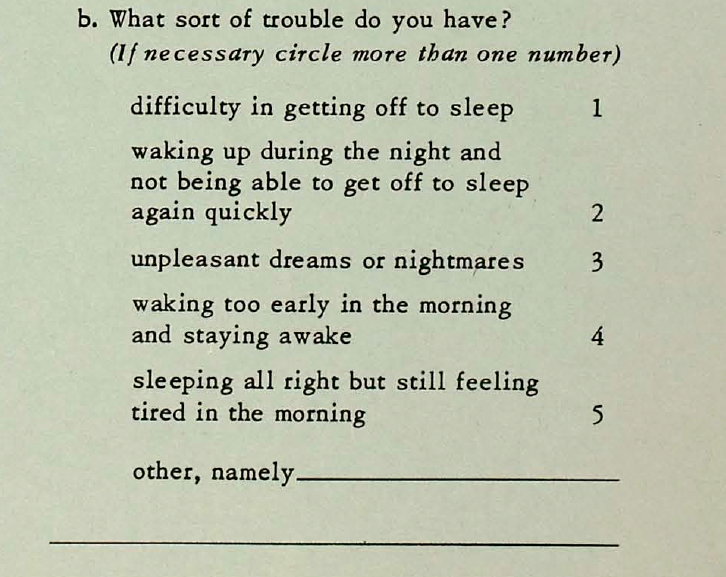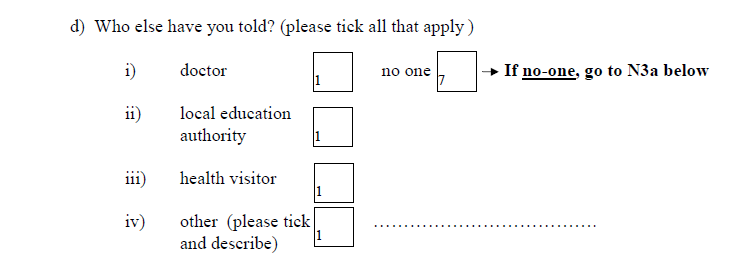Interviewer Instructions
Key Considerations
- Instructions are different in textual format from the question text.
- No more than one instruction per question.
Interviewer instructions are pieces of text that give further information to the respondent, about the way to ask or answer a question. The most common example of this is 'Tick all that apply' or 'Tick one only'. It provides important information for interpreting the variable answers. It exists as part of a Question Item or Question Grid and cannot exist independently of a question.
Interviewer instructions are entered as part of the creating a question. When building a question, the instruction text is entered in the second field of the page under 'Instruction'. The following are some points to consider when dealing with instructions.
The format and position of interviewer instructions varies from questionnaire to questionnaire. Depending on where the instruction appears and in which text format, we decide whether it should be entered as an instruction or as part of the question literal. When the text follows on the same line as the question literal, it is entered as part of the question literal. When there is a carriage return (i.e. it is on a separate line), the text may be entered as an instruction (see Example 1). When the text is on a separate line, the formatting of the text (i.e., bold, in brackets) can provide an indication of whether the text should be entered as an instruction or a statement.
Example 1 Questionnaire: NSHD University Questionnaire 1964
Questionnaire layout:
Archivist view (nshd_64_cmu):
If, however, the instruction text is in the same format as the question text before it and there is no carriage return (i.e. the text runs on) then it is entered as part of the question text; see Example 2.
Example 2 Questionnaire: ALSPAC My Daughter's Well Being
Questionnaire layout:
Archivist view (alspac_99_msdw):
One instruction per question
Some questions have more than one instruction. However, a question item or gird contains space for only one instruction per question, therefore additional instructions need to be entered as statements or as part of the question literal depending on the function of the text. Multiple instructions must not be concatenated (see Example 3).
The decision of choosing which text is entered as a statement or part of the question literal and which as an instruction, is discretionary. This is because the way instructions are used within questionnaires can vary greatly and therefore it is difficult to apply a consistent protocol. Some salient features of text entered as instructions are: the text is often shorter, practically-orientated (in answering the question), and positioned closer to the response domain. Furthermore, if the text is entered as a statement then it is positioned after the question construct.
Example 3 Questionnaire: BCS Home and All That 1986
Questionnaire layout:
Archivist view (bcs_86_haat):
Instructions are not repeated
The third principle from the Principles for Archiving Metadata states only to record what is contained within the questionnaire. However, when the same instruction appears twice in a question, it only needs to be entered once and not repeated, see Example 4 where 'Tick all that apply' appears twice in the questionnaire.
Example 4 Questionnaire: BCS Life and Leisure 1986
Questionnaire layout:
Archivist view (bcs_86_lal):



